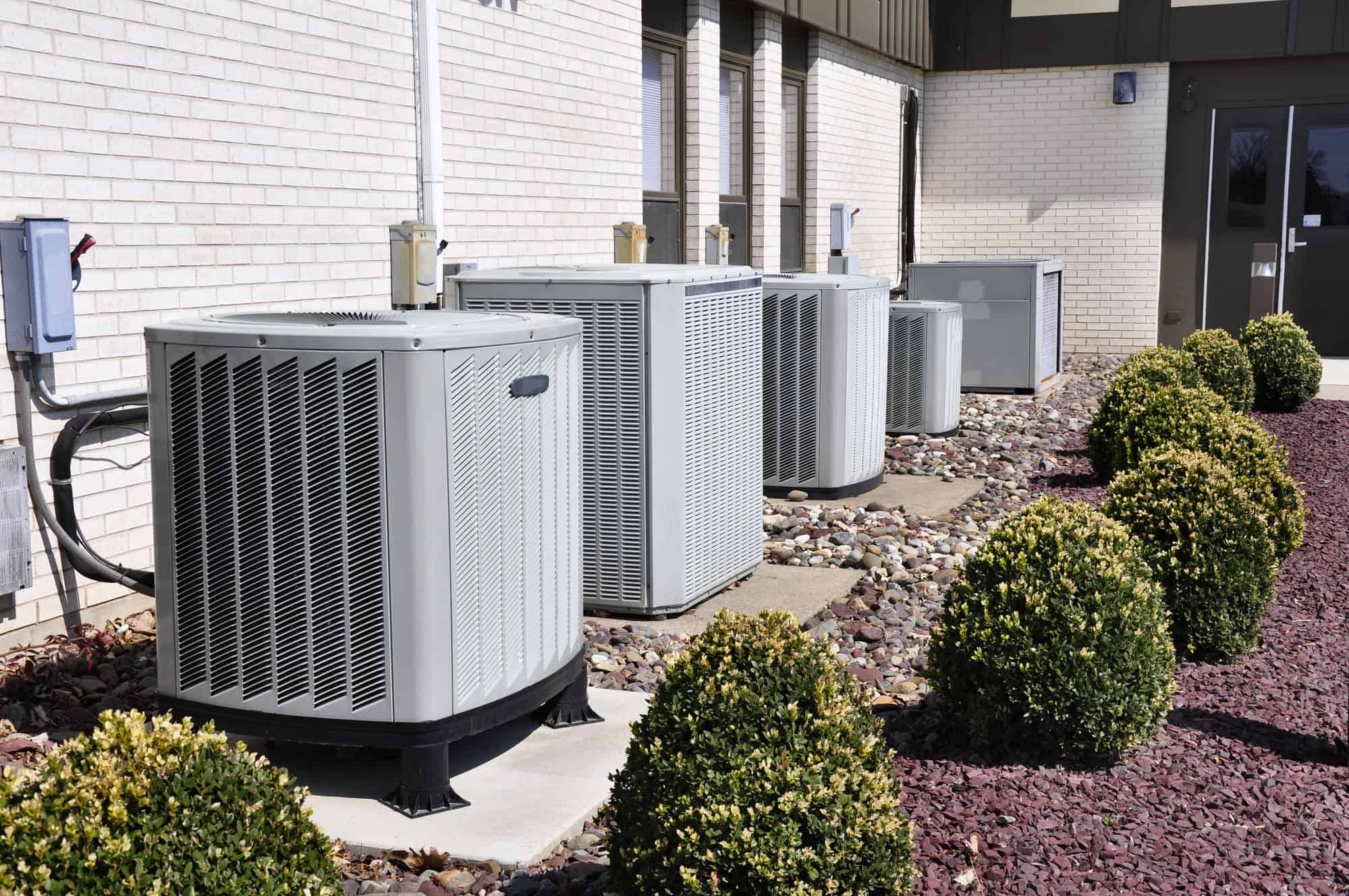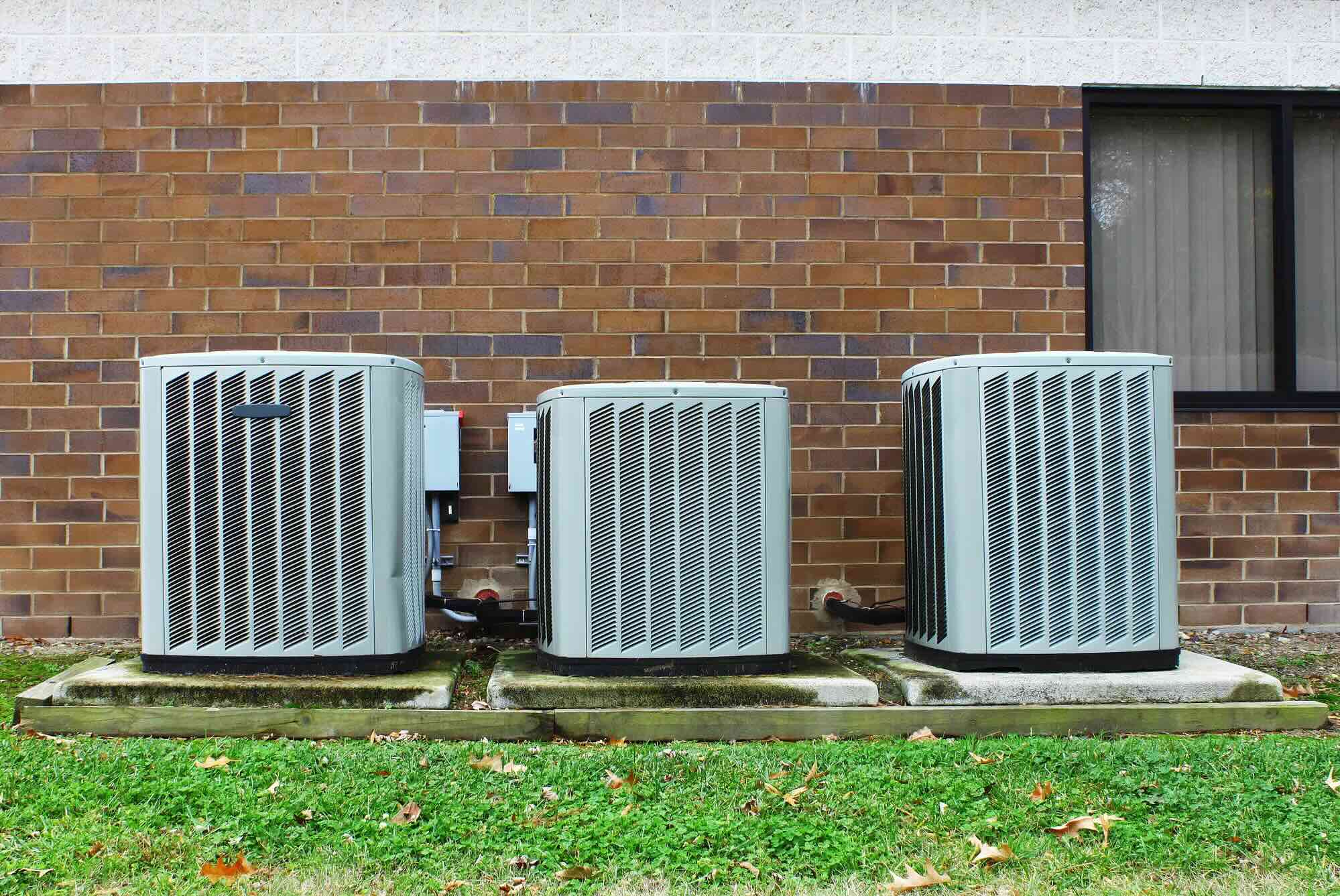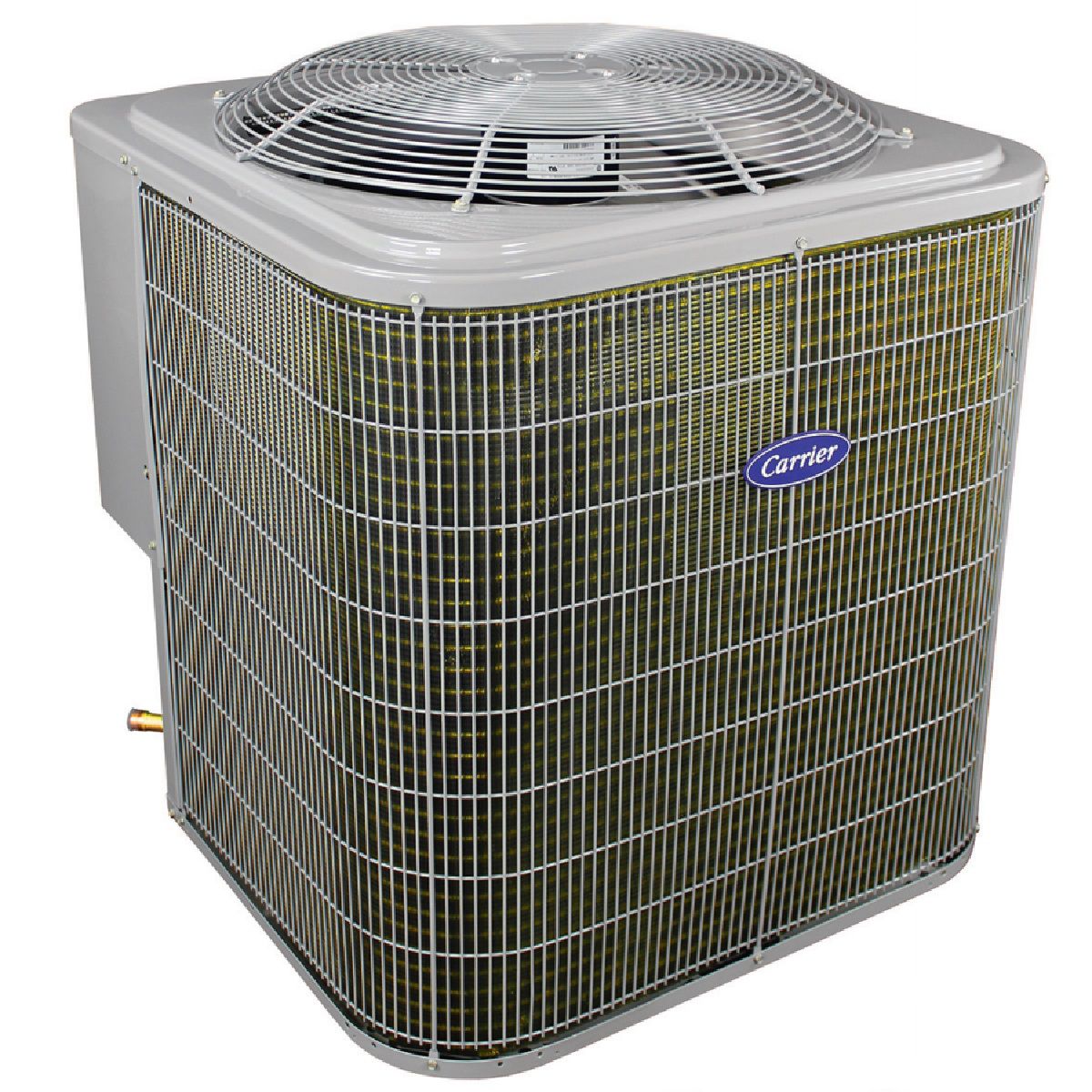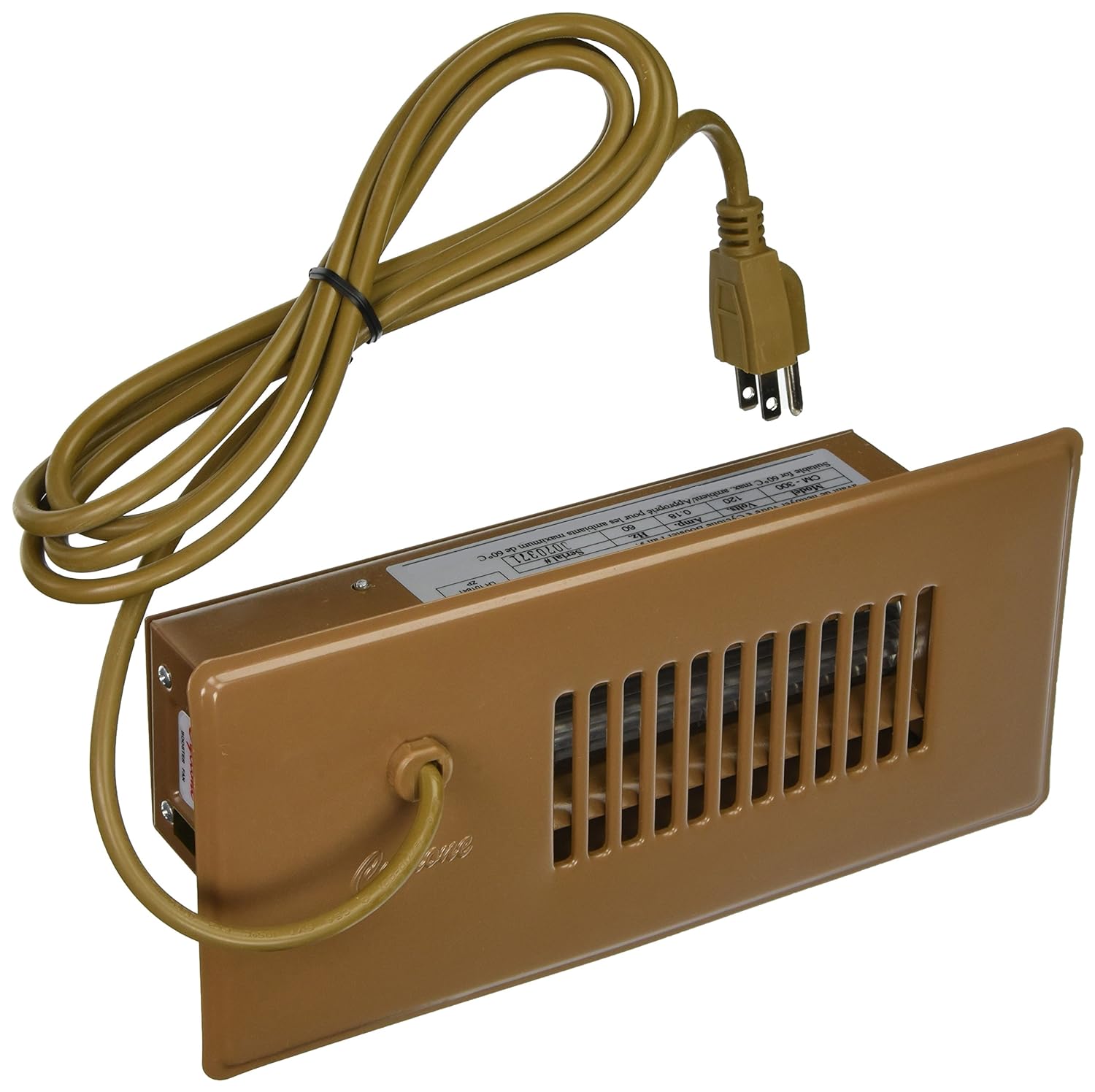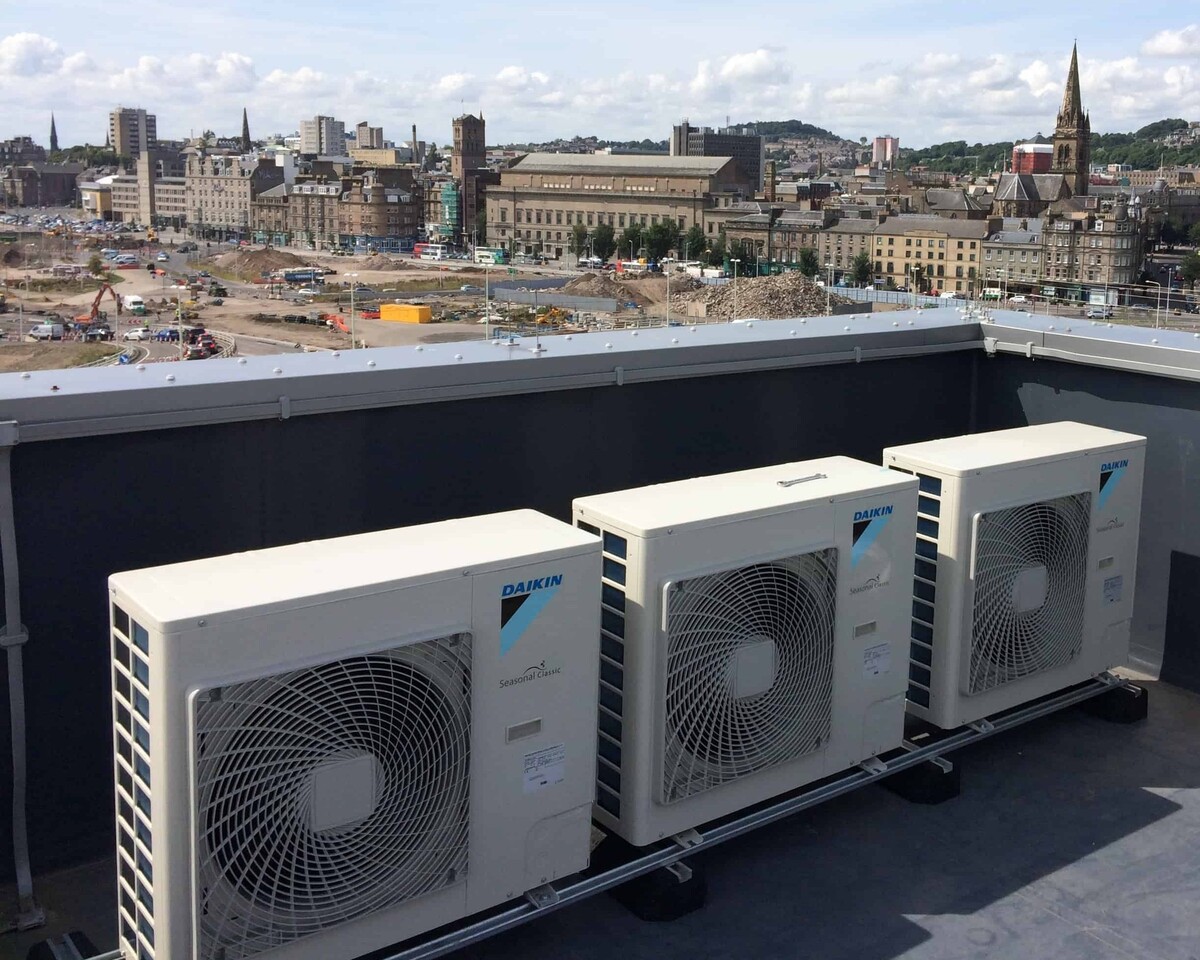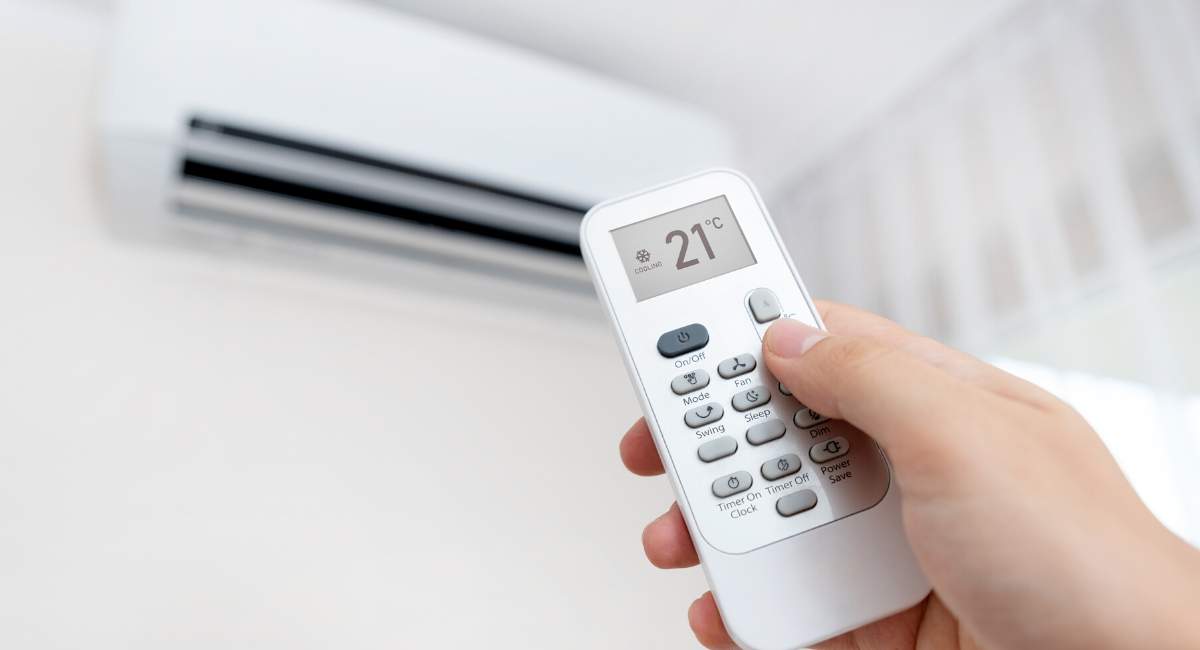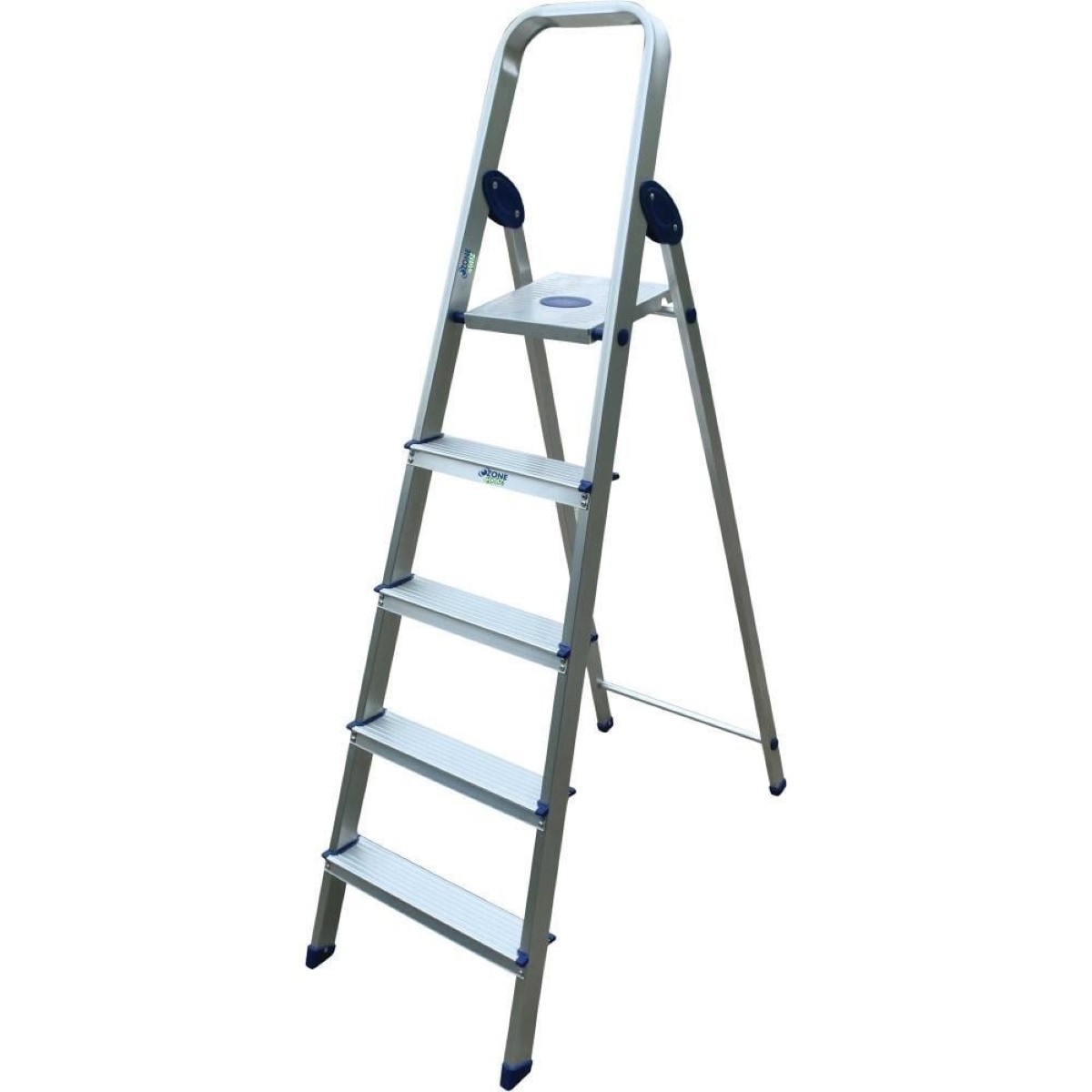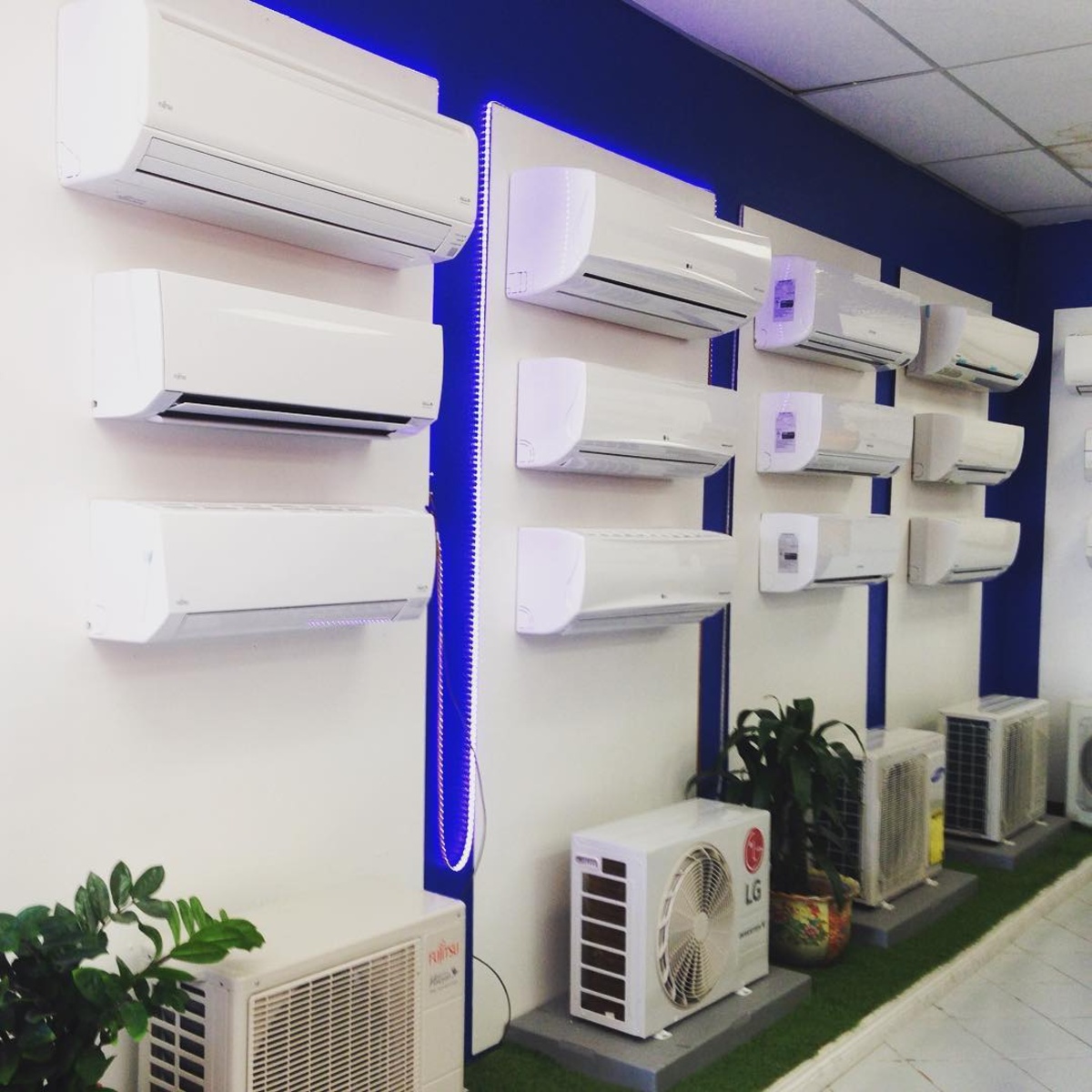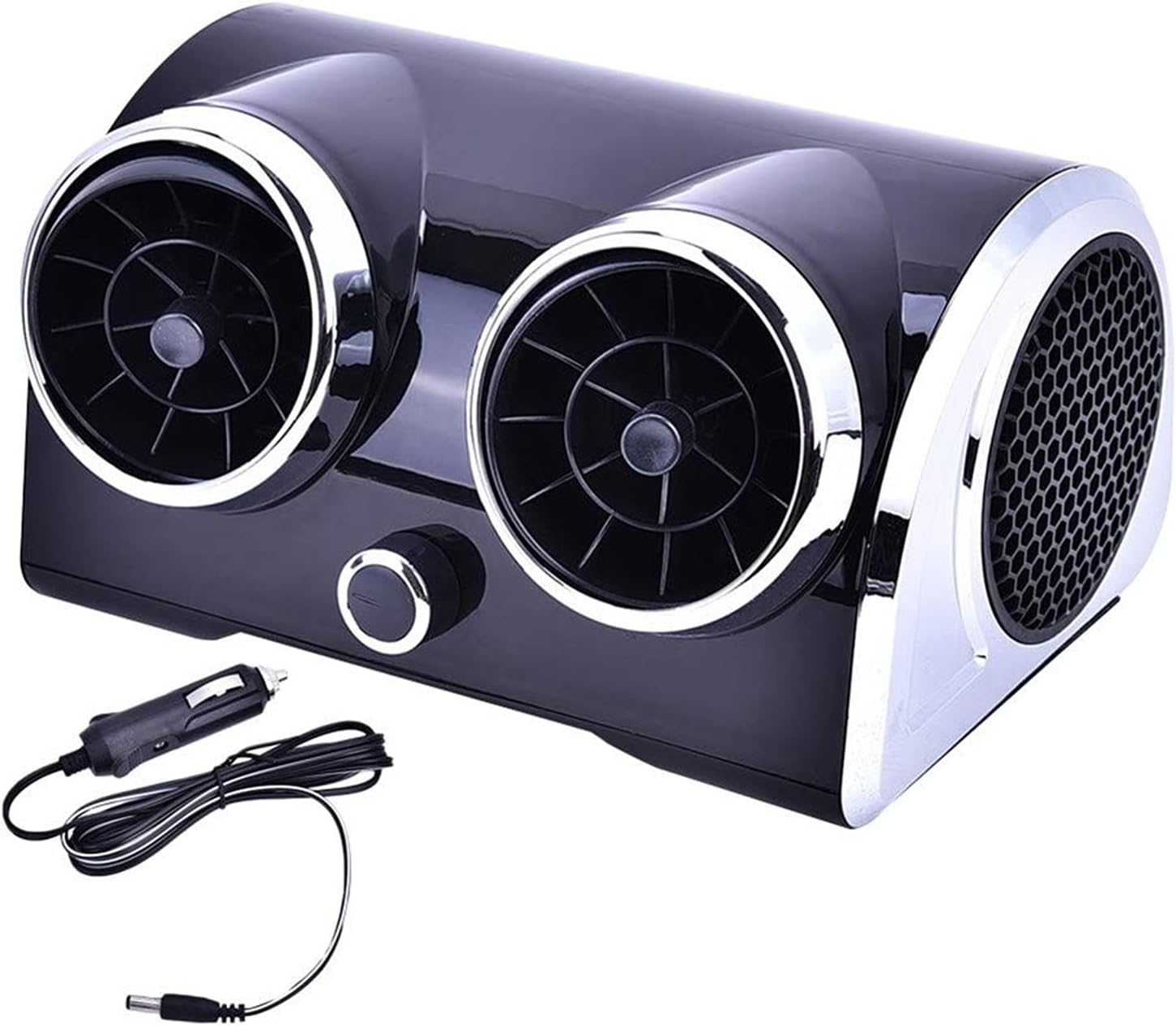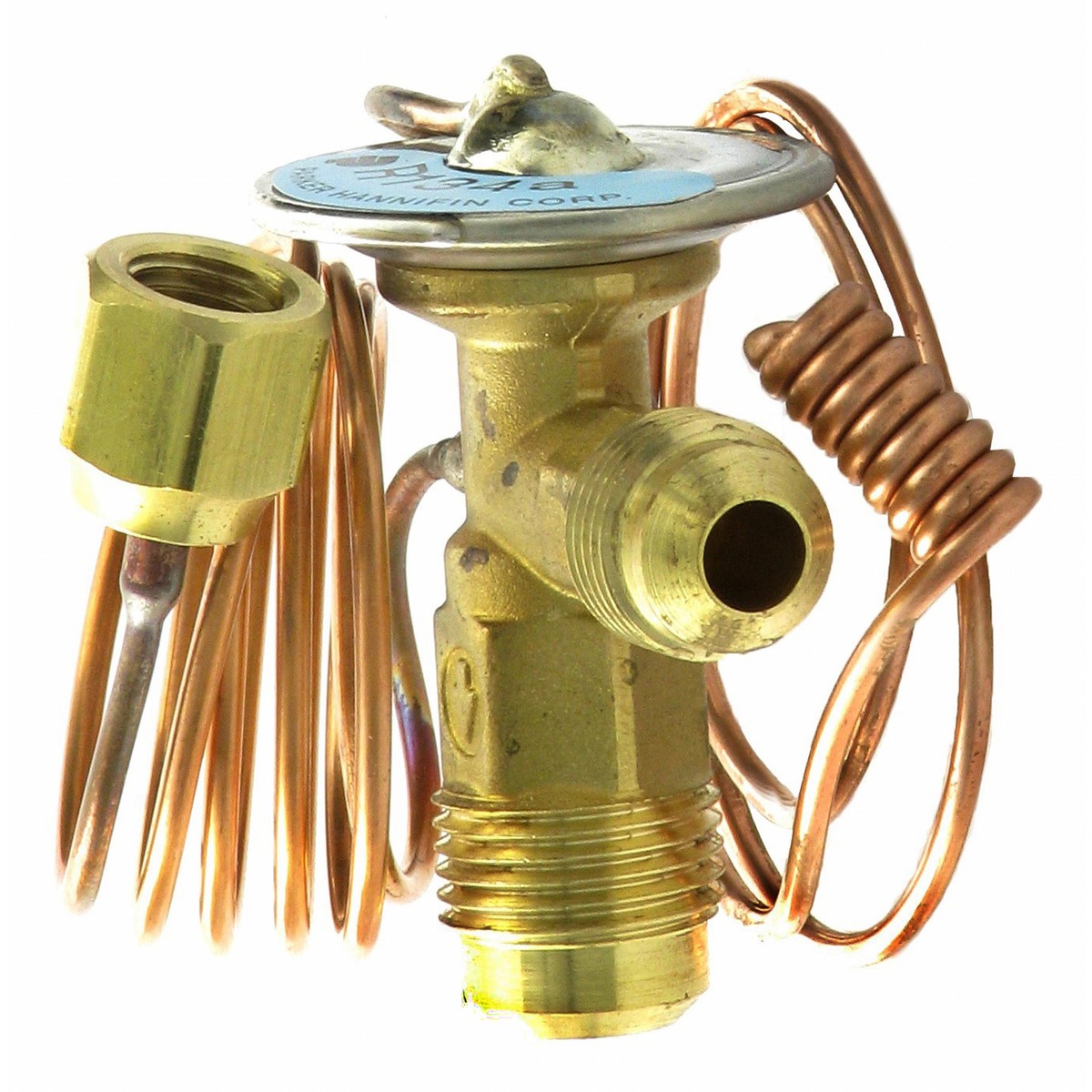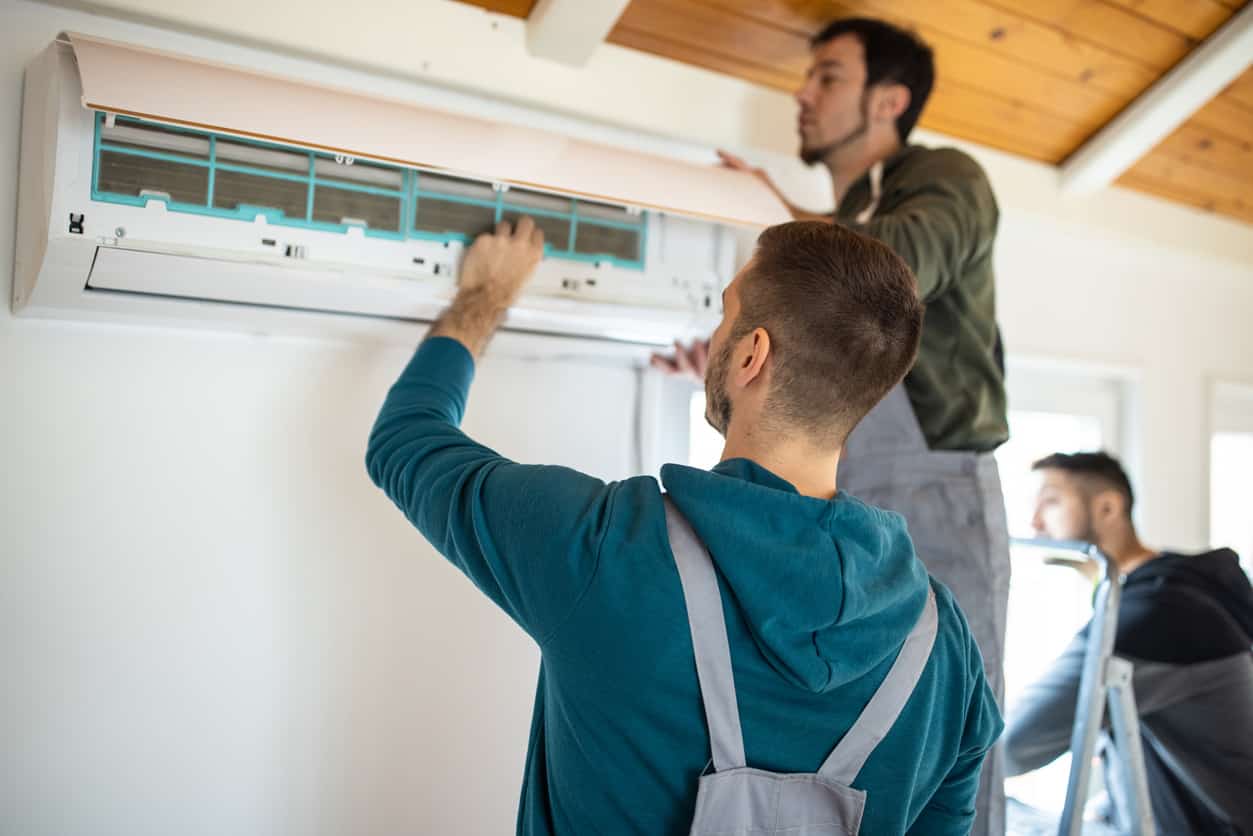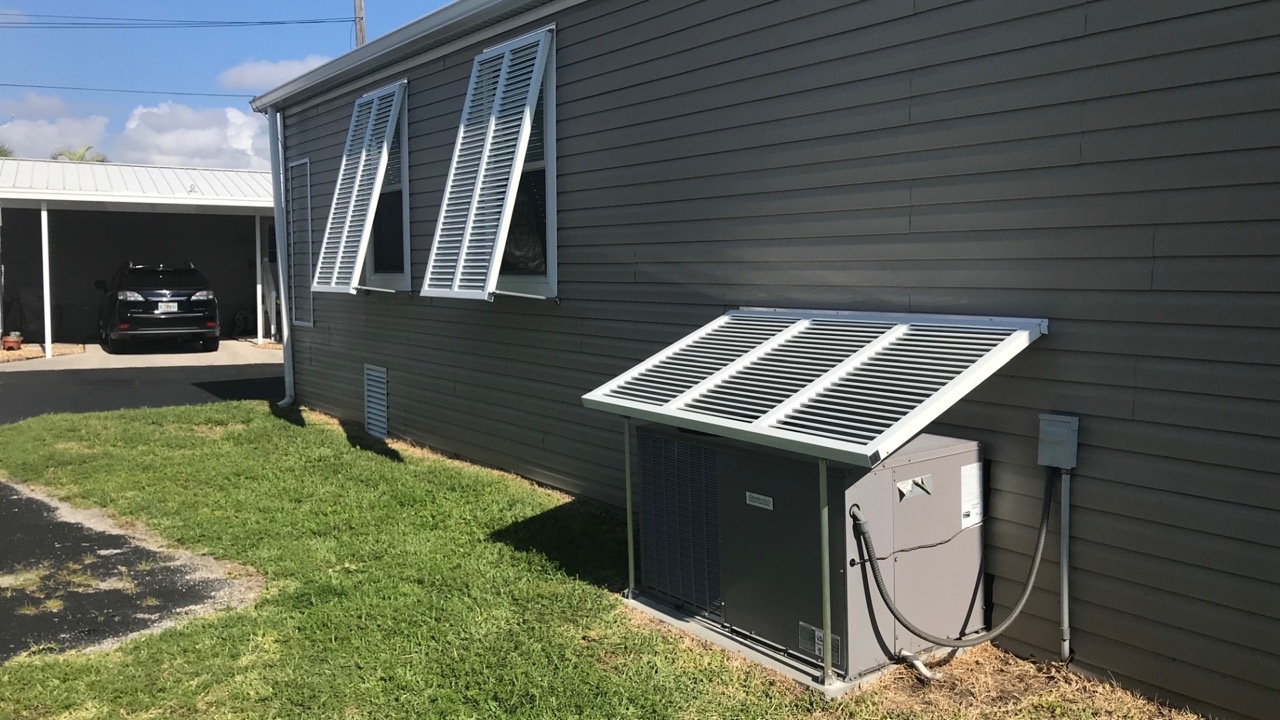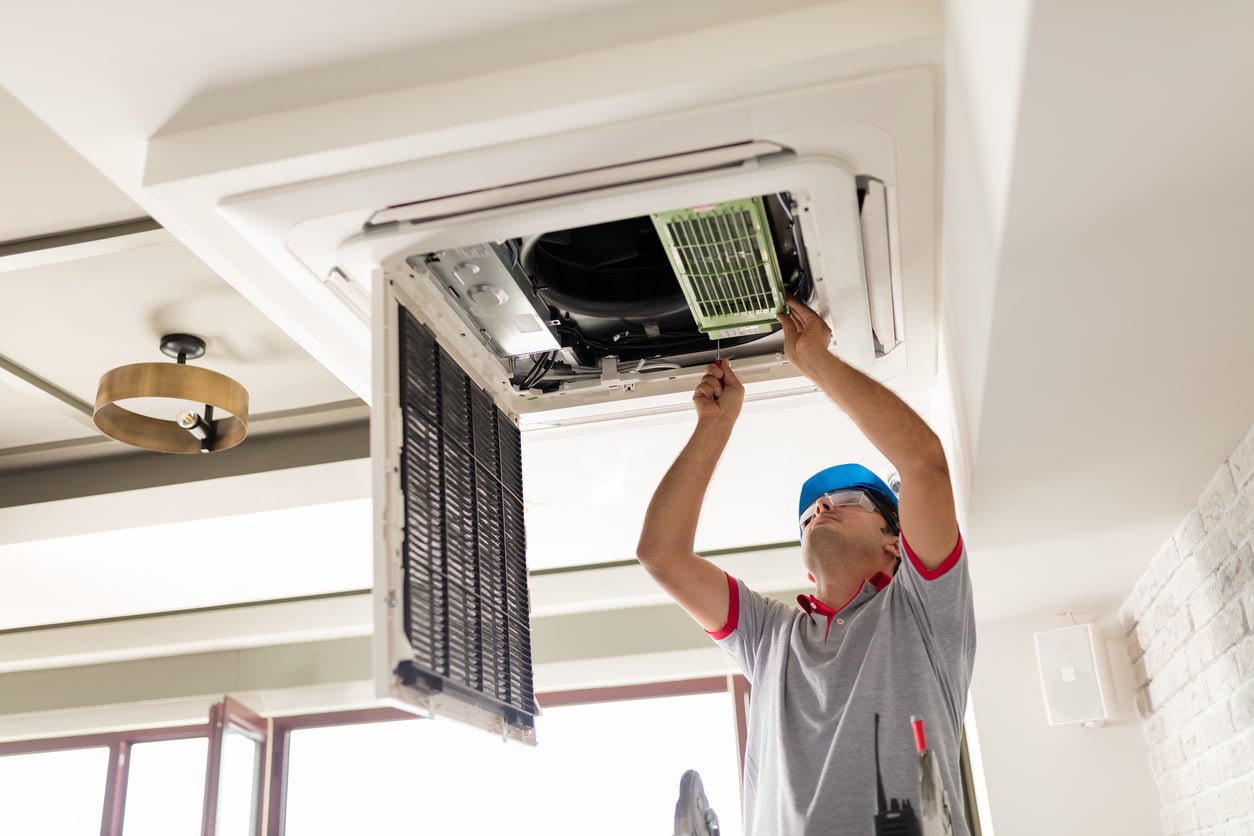Home>Home Maintenance>What Is The Outside Air Conditioning Unit Called
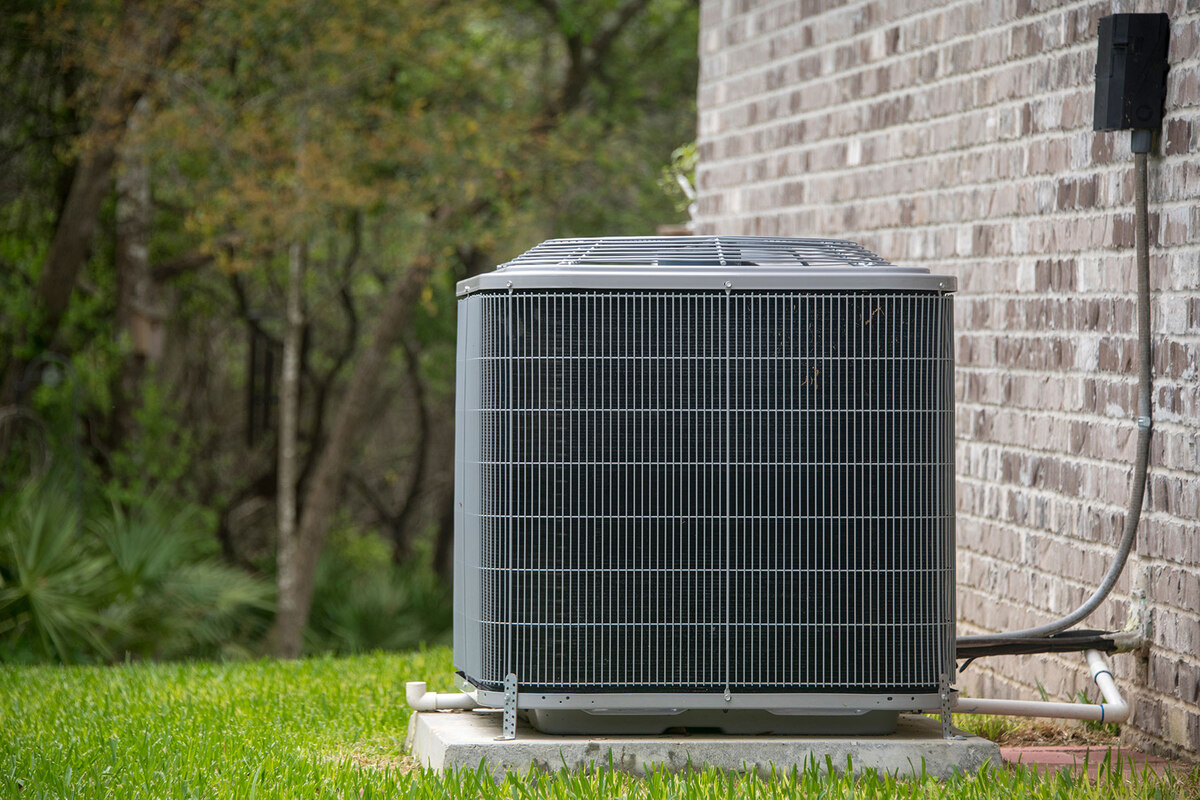

Home Maintenance
What Is The Outside Air Conditioning Unit Called
Modified: March 6, 2024
Learn about the home-maintenance essential: the outside air conditioning unit. Discover what it is, how it works, and why it's crucial for a comfortable living environment.
(Many of the links in this article redirect to a specific reviewed product. Your purchase of these products through affiliate links helps to generate commission for Storables.com, at no extra cost. Learn more)
Introduction
Welcome to the world of home maintenance, where we explore the inner workings of your beloved abode and help you keep everything running smoothly. In this article, we’re going to delve into the mysterious realm of the outside air conditioning unit. Perhaps you’ve glanced at it while mowing the lawn or lounging on your patio, but do you really know what it is and how it works?
The outside air conditioning unit, also known as the condenser unit or the AC compressor, plays a crucial role in keeping your home cool and comfortable during the scorching summer months. While the inside unit is responsible for circulating and cooling the air, the outside unit is tasked with releasing the excess heat absorbed from your indoor space. Without the outside unit, your air conditioner would be powerless to combat the sweltering heat outside.
Understanding how the outside air conditioning unit operates can help you better appreciate its importance and take proper care of it. So, in the following sections, we’ll explore its components, its functioning, and some essential maintenance tips to keep it in optimal condition. Let’s dive into the world of the outside air conditioning unit and uncover its secrets!
Key Takeaways:
- The outside air conditioning unit, also known as the condenser unit or AC compressor, releases heat from your home, playing a crucial role in keeping your indoor environment cool and comfortable during hot summer days.
- Regular maintenance, such as cleaning the surrounding area, inspecting the condenser coil, and monitoring refrigerant levels, is essential to ensure the longevity and optimal performance of your outside air conditioning unit. Professional care and safety are key to keeping your cooling system running smoothly.
Read more: What Is Outside AC Unit Called
Understanding the Outside Air Conditioning Unit
The outside air conditioning unit, as mentioned earlier, serves as the condenser unit and AC compressor in your cooling system. Its primary function is to release the heat that your indoor unit absorbs from the air inside your home. As a result, it plays a crucial role in maintaining a comfortable and cool indoor environment.
The outside unit consists of several key components that work together to facilitate the cooling process. These include the compressor, condenser coil, fan, and refrigerant lines. Let’s take a closer look at each component:
- Compressor: The compressor is often referred to as the heart of the air conditioning system. Its main job is to pressurize the refrigerant, which then goes through the condenser coil for cooling.
- Condenser Coil: The condenser coil, made of copper or aluminum, allows the refrigerant to release the heat it absorbed from the indoor air. As the hot refrigerant passes through the coils, the metal fins on the coil help dissipate the heat.
- Fan: The fan in the outside unit serves two purposes. First, it pulls outdoor air over the condenser coil to help cool the refrigerant. Second, it expels the hot air generated during the cooling process, allowing the system to maintain optimal performance.
- Refrigerant Lines: These lines connect the outdoor unit to the indoor unit, allowing the refrigerant to flow between them. The refrigerant absorbs heat from the indoor air, carries it to the outside unit, and releases it through the condenser coil.
Understanding these components and how they work together can give you a better grasp of the cooling process and help you identify any potential issues or maintenance needs. In the next section, we’ll explore the functioning of the outside air conditioning unit in more detail.
Components of the Outside Air Conditioning Unit
The outside air conditioning unit is a complex system composed of several key components. Understanding these components and their roles will provide you with a deeper insight into how your cooling system operates. Let’s take a closer look at each of these components:
- Compressor: The compressor is responsible for pressurizing the refrigerant and circulating it through the system. It plays a crucial role in the cooling process by increasing the pressure and temperature of the refrigerant before it enters the condenser coil.
- Condenser Coil: This is where the magic happens. The condenser coil is designed to release heat as the hot refrigerant flows through it. The coil is made up of metal fins that provide increased surface area for heat transfer. Outdoor air is blown across the coil by the fan, which helps cool down the refrigerant.
- Fan: The fan in the outside unit serves two important purposes. First, it draws outdoor air over the condenser coil, facilitating the heat transfer process. Second, it expels the hot air that the coil produces. Without proper airflow, the efficiency of the cooling system can be significantly compromised.
- Refrigerant Lines: These lines, also known as the refrigerant tubing, connect the outdoor unit to the indoor unit. They provide a pathway for the refrigerant to flow between the two units. The refrigerant lines are typically made of metal or high-quality rubber to ensure durability and prevent leaks.
- Expansion Valve: The expansion valve is a small device located between the condenser coil and evaporator coil. It regulates the flow of refrigerant into the evaporator coil, allowing for proper cooling. The expansion valve controls how much refrigerant flows into the evaporator, ensuring optimal system performance.
- Electrical Components: The outside unit also contains various electrical components, including capacitors, contactors, and relays. These components play a crucial role in controlling the power supply and facilitating the operation of the compressor and fan motor.
Understanding these components and their functions can help you identify issues and perform basic troubleshooting. However, it’s important to note that working on the electrical components or refrigerant lines should be left to trained professionals for safety reasons. In the next section, we’ll dive deeper into the functioning of the outside air conditioning unit.
Functioning of the Outside Air Conditioning Unit
The outside air conditioning unit plays a vital role in the overall functioning of your cooling system. It works in tandem with the inside unit to keep your home comfortable during hot summer days. Let’s delve into the step-by-step functioning of the outside air conditioning unit:
- Refrigerant Compression: The process begins with the compressor, located in the outside unit. The compressor acts as the heart of the cooling system by compressing the refrigerant, a chemical substance responsible for absorbing heat.
- Refrigerant Condensation: Once the refrigerant is compressed, it enters the condenser coil, a series of tubes with metal fins. As the hot, pressurized refrigerant flows through the coil, the metal fins help dissipate the heat, and the refrigerant begins to condense into a liquid state.
- Heat Dissipation: To aid in the cooling process, the outside unit’s fan comes into play. The fan pulls air from the outdoor environment and forcefully directs it over the condenser coil. As the air passes over the coil, it absorbs the heat released by the condensing refrigerant, allowing the refrigerant to cool down further.
- Refrigerant Expansion: After the refrigerant is cooled, it travels through the refrigerant lines back into the indoor unit. Inside the indoor unit, the expansion valve regulates the flow of refrigerant into the evaporator coil, where it evaporates into a gas as it absorbs heat from the indoor air.
- Repeat Cycle: The refrigerant, now in a gaseous state, is then sent back to the compressor in the outside unit to begin the cycle again. This continuous cycle of compression, condensation, expansion, and evaporation allows the air conditioning system to maintain a comfortable indoor temperature.
It is essential to note that the outside unit’s functioning is closely tied to the inside unit. The inside unit extracts the warm air from your home, cools it, and then circulates it back into the rooms. The outside unit plays a crucial role in releasing the heat that your indoor unit absorbs, ensuring the cooling cycle can continue efficiently.
Now that we have a good understanding of how the outside air conditioning unit works, let’s explore some essential maintenance tips to keep it running smoothly and efficiently in the next section.
The outside air conditioning unit is called a condenser. It is responsible for releasing the heat from inside your home to the outside. Regular maintenance of the condenser can help improve the efficiency of your air conditioning system.
Maintenance and Care for the Outside Air Conditioning Unit
Proper maintenance and care are essential to ensure the longevity and optimal performance of your outside air conditioning unit. By following these maintenance tips, you can maximize energy efficiency, prevent costly repairs, and extend the lifespan of your cooling system:
- Clean the Surrounding Area: Regularly remove any debris, leaves, branches, or dirt that may be obstructing the unit or the condenser coil. Keeping the area around the outside unit clear will allow for proper airflow and prevent potential damage to the components.
- Inspect the Coil Fins: Check the condenser coil’s fins for any signs of damage or bent fins. If you notice bent fins, you can use a fin comb or a gentle brush to straighten them out. Ensuring the fins are straight and clean will improve airflow and heat transfer.
- Clean the Coil: Over time, the condenser coil may accumulate dirt and debris, reducing its efficiency. Use a soft brush or a vacuum cleaner with a brush attachment to gently clean the coil. Avoid using high-pressure water or harsh chemicals, as they can damage the coil. If the coil is excessively dirty, consider hiring a professional air conditioning technician to perform a thorough cleaning.
- Check the Fan Motor: Inspect the fan motor for any signs of damage, such as loose or frayed wires, or excessive noise during operation. If you notice any issues, it’s best to consult with a professional technician for repair or replacement.
- Monitor Refrigerant Levels: Low refrigerant levels can negatively impact the cooling performance of your air conditioning system. If you suspect a refrigerant leak, such as a significant decrease in cooling efficiency or ice build-up on the refrigerant lines, contact a professional technician to inspect and recharge the refrigerant as needed.
- Regular Maintenance by Professionals: It’s highly recommended to schedule regular maintenance visits with a qualified HVAC technician. They can perform a thorough inspection of your entire cooling system, including the outside unit, and address any potential issues before they escalate into major problems.
Remember, safety should always be a priority when performing any maintenance tasks. If you’re unfamiliar or uncomfortable with any aspect of maintenance, it’s best to seek professional assistance to avoid causing further damage or injury.
By following these maintenance tips and investing in professional care, you can keep your outside air conditioning unit in excellent condition, ensuring efficient cooling for years to come.
Now let’s move on to the next section, where we’ll discuss some common issues you may encounter with your outside air conditioning unit.
Common Issues with the Outside Air Conditioning Unit
While the outside air conditioning unit is designed to withstand various weather conditions and provide reliable cooling, it may experience occasional issues. Here are some common problems you may encounter with your outside unit:
- Refrigerant Leaks: Leaking refrigerant can lead to reduced cooling performance and higher energy consumption. If you notice a decrease in cooling efficiency or hissing sounds coming from the unit, it may indicate a refrigerant leak. Contact a professional technician to identify and repair the leak.
- Condenser Coil Damage: The condenser coil is susceptible to damage from debris, harsh weather, or physical impact. When the coil is damaged, it can hinder heat transfer and reduce cooling efficiency. Consult a professional technician to assess the extent of the damage and perform any necessary repairs or replacements.
- Fan Motor Issues: A malfunctioning or faulty fan motor can cause insufficient airflow, leading to poor cooling performance and potential system overheating. If you hear unusual noises from the fan or notice reduced airflow, seek professional assistance to diagnose and resolve the problem.
- Electrical Problems: Electrical issues, such as faulty wiring or defective capacitors, can disrupt the proper functioning of the outside unit. Signs of electrical problems include frequent tripping of breakers or the unit not turning on at all. Contact an HVAC technician to inspect and address any electrical issues.
- Clogged Drainage: Over time, the condensate drain line that carries excess moisture away from the unit can become clogged with dirt, algae, or debris. This can result in water leakage or overflow, potentially causing water damage. It’s important to have the drain line regularly inspected and cleaned by a professional to prevent clogs and maintain proper drainage.
- Improper Sizing: If the outside unit is not correctly sized for your cooling needs, it can lead to inefficient cooling and increased energy consumption. An undersized unit will struggle to meet the cooling demands, while an oversized unit may short cycle, resulting in poor humidity control. Consult with an HVAC professional to ensure proper sizing during installation or if you suspect size-related issues.
Remember, it’s best to consult a professional HVAC technician to diagnose and resolve any issues with your outside air conditioning unit. They have the knowledge and expertise to troubleshoot problems effectively and ensure your cooling system is in top shape.
Now that we’ve discussed common issues, let’s wrap up our exploration of the outside air conditioning unit in the next section.
Conclusion
Congratulations! You’ve now gained a comprehensive understanding of the outside air conditioning unit and its importance in keeping your home cool and comfortable. From its components and functioning to maintenance and common issues, you’ve delved into the fascinating world of this integral part of your cooling system.
By understanding the components of the outside unit, such as the compressor, condenser coil, fan, and refrigerant lines, you now have a clearer picture of how these parts work together to facilitate the cooling process. Additionally, you’ve learned the importance of regular maintenance and care to ensure optimal performance and extend the lifespan of your outside unit.
Throughout this article, we’ve highlighted the significance of professional maintenance and the importance of safety when handling any maintenance tasks. Remember, seeking professional assistance is crucial when dealing with electrical components, refrigerant-related issues, or complex repairs.
By practicing proper maintenance, regularly cleaning the area surrounding the unit, inspecting and cleaning the condenser coil, and addressing any potential issues promptly, you can enjoy efficient cooling and avoid costly repairs. Regular maintenance visits by HVAC professionals will help ensure that your outside air conditioning unit is functioning at its best.
In summary, the outside air conditioning unit is a crucial component of your cooling system. Its role in releasing heat from your home is vital for maintaining a comfortable indoor environment. Taking care to clean, inspect, and troubleshoot any issues will help keep your outside unit running smoothly and efficiently.
We hope this article has provided you with valuable insights into the outside air conditioning unit. With this knowledge, you can now confidently maintain and care for your cooling system, ensuring a cool and comfortable home for years to come.
Frequently Asked Questions about What Is The Outside Air Conditioning Unit Called
Was this page helpful?
At Storables.com, we guarantee accurate and reliable information. Our content, validated by Expert Board Contributors, is crafted following stringent Editorial Policies. We're committed to providing you with well-researched, expert-backed insights for all your informational needs.
